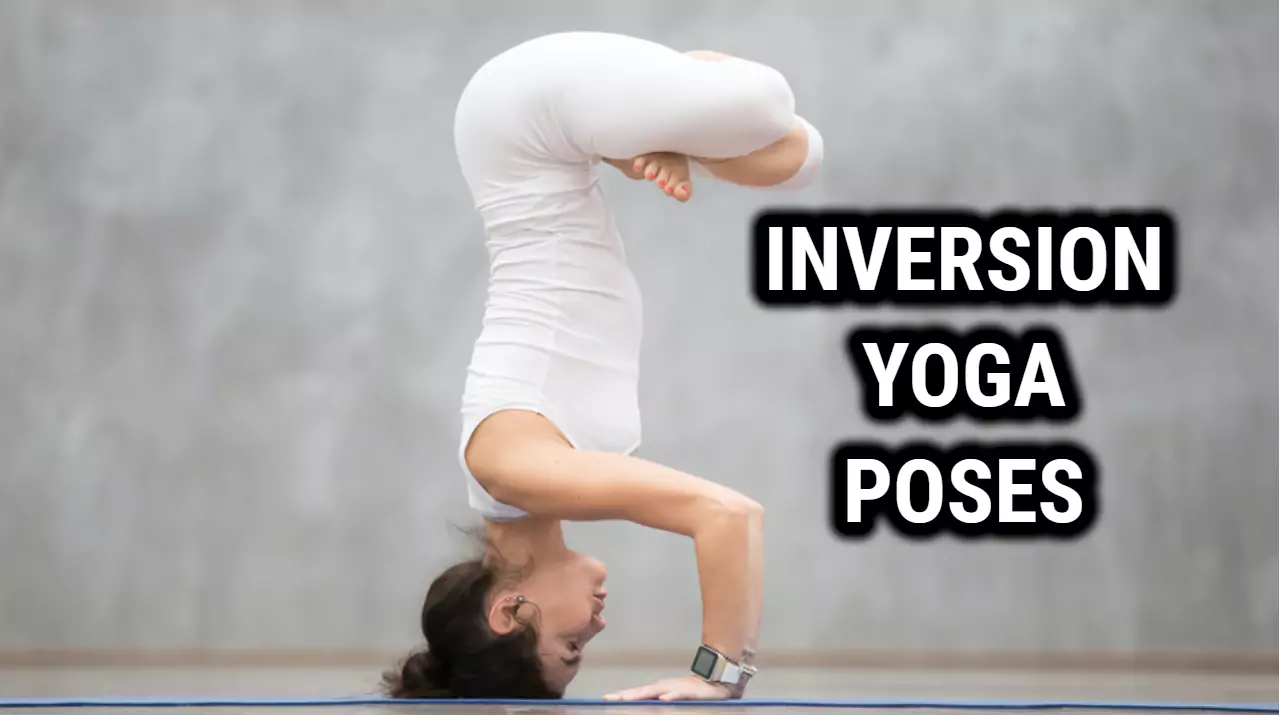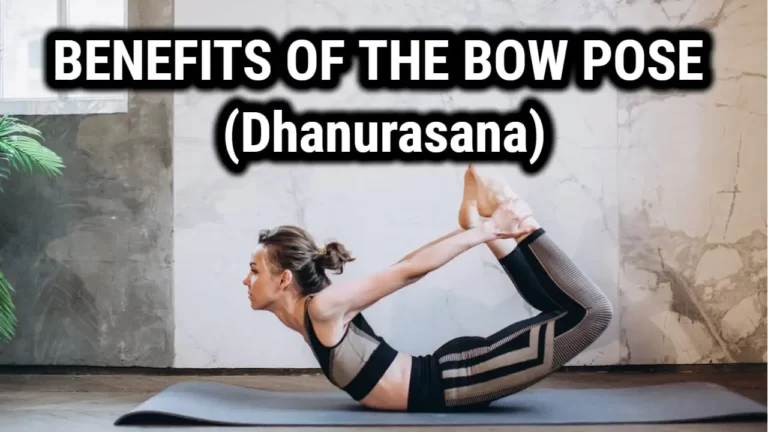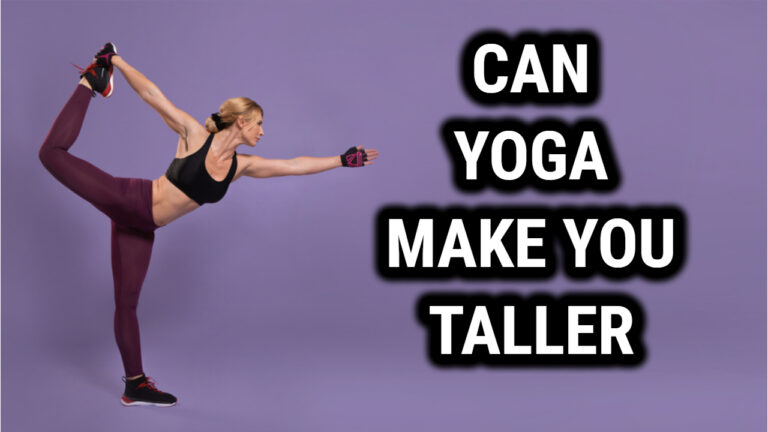Inversion Yoga Poses: Improve Your Balance and Flexibility

Inversion yoga poses have become increasingly popular in recent years. If you’re looking for a way to challenge yourself physically and mentally, these poses are the perfect way to do so.
Not only do they offer physical benefits, but they can also help improve your mental outlook on life. In this article, you’ll learn more about inversion yoga poses and how they can benefit your overall wellness.
Inversion yoga poses involve inverting the body or flipping it upside down. This position allows gravity to assist with stretching the muscles of the spine and other areas of the body.
It also helps increase blood circulation throughout the body, which is beneficial for both physical and mental health. In addition to these physical benefits, inversion poses also provide a sense of calmness and relaxation as well as improved concentration and focus.
For those seeking to add something new to their yoga practice, inversion yoga poses are an excellent choice. With proper instruction from a qualified teacher, these poses can be safely incorporated into any existing routine regardless of age or experience level.
Benefits of Inversion Yoga Poses

Inversion yoga poses offer a variety of benefits for the mind and body. Here are some of the key benefits:
- Improved circulation: Inversions help to increase blood flow to the brain, heart, and lungs, which can improve overall circulation and oxygenation of the body.
- Reduced stress: Inversions can help to reduce stress and anxiety by calming the mind and promoting relaxation.
- Increased flexibility: Inversions can help to improve flexibility in the spine, shoulders, and hips.
- Strengthened core and upper body: Inversions require a great deal of core and upper body strength, so practicing them regularly can help to build strength in these areas.
- Improved balance: Inversions require a great deal of balance, so practicing them regularly can help to improve overall balance and stability.
- Boosted immune system: Inversions can help to stimulate the lymphatic system, which plays a key role in the immune system, helping to fight off infections and illnesses.
- Improved digestion: Inversions can help to improve digestion by increasing blood flow to the digestive organs and promoting the movement of waste through the body.
Incorporating inversion yoga poses into your practice can offer a wide range of benefits for both the body and mind. However, it’s important to work with a knowledgeable teacher and to take your time building up to more challenging inversions to avoid injury.
Types Of Inversion Postures
There are several types of inversion yoga poses that can help you turn your practice upside down. Here are some of the most popular ones:
1. Shoulderstand (Sarvangasana): This is a supported inversion posture in which the body is balanced on the shoulders and the head is below the heart.
2. Headstand (Sirsasana): This is an unsupported inversion posture in which the body is balanced on the head and the feet are raised above the heart.
3. Plow Pose (Halasana): This is a supported inversion posture in which the body is balanced on the back and the feet are raised above the heart.
4. Handstand (Adho Mukha Vrksasana): This is an unsupported inversion posture in which the body is balanced on the hands and the head is below the heart.
5. Supported Bridge Pose (Setu Bandha Sarvangasana): This is a supported inversion posture in which the body is balanced on the back and the feet are raised above the heart.
6. Downward Facing Dog (Adho Mukha Svanasana): This is an unsupported inversion posture in which the body is balanced on the hands and feet and the head is below the heart.
7. Forearm Stand (Pincha Mayurasana): In this pose, you balance on your forearms with your legs extended towards the ceiling. It can help improve balance, strengthen the shoulders and arms, and increase focus.
Inversion yoga poses offer numerous physical and mental benefits! They help enhance our understanding of our bodies while also providing us with courage, strength, and courage to work through life’s challenges – both on and off the mat.
Also Read: Best Yoga Practices for Eyes: Improve Your Vision Naturally
Advanced Inversion Poses

Now it’s time to delve into more advanced poses. Here are five inversion poses to add to your yoga practice:
Crow Pose: To get into crow pose, or Bakasana, begin in squat stance with the feet together and arms bent outward like wings. Lean forward into a low squat position and shift your weight onto the palms of your hands as you lift up onto the balls of your feet. Engage your core and lift one foot off of the ground at a time–now you’re flying!
Wheel Pose: Wheel pose is an intense backbend that provides a great stretch through all areas of the body including chest, abs, quadriceps, shoulders, glutes, hamstrings–the list goes on! Start by lying flat on your back with knees bent towards chest then place hands beside head with palms flat against mat before pressing firmly into hands as you lift hips up towards sky.
Sequence Of Inversion Yoga Poses
Ah, the joys of yoga! For those of us who love to invert our bodies and test our physical balance, there’s nothing quite like it. Inversion poses can be a fun and challenging way to get your blood flowing, while also helping you relax and reset. So let’s talk about the sequence of poses one might want to attempt in an inversion yoga session.
Downward dog is a great place to start as it provides a gentle stretch for the spine and chest muscles. Bridge pose is next on the list; this pose helps open up the ribcage and encourages relaxation.
After bridge pose comes headstand, which strengthens the arms and core muscles while stretching out the shoulders. Shoulder stand follows headstand, offering further strengthening of the arms, and back muscles.
Finally comes handstand; this powerful pose engages nearly all of your body’s muscle groups at once!
Inverting your body can be both physically difficult and mentally gratifying; so why not give it a try? Whether you’re just getting started with inversion yoga or have been practicing for years, there are plenty of poses to keep you happily inverted.
How to Practice Inversion Yoga Poses
Practicing inversion yoga poses can be a great way to challenge yourself and add variety to your yoga practice. However, it’s important to approach these poses with caution and proper technique to avoid injury. Here are some tips to help you safely practice inversion yoga poses:
- Warm up properly before attempting inversion poses. This can include gentle stretches and sun salutations to prepare your body.
- Start with beginner-level poses, such as downward-facing dog or dolphin pose, before progressing to more advanced inversions.
- Use props such as blocks or straps to assist you in the pose and provide support to your body.
- Engage your core muscles and keep your gaze focused to maintain balance and stability in the pose.
- Breathe deeply and steadily throughout the pose, taking slow and controlled breaths.
It’s important to listen to your body and not push yourself too hard in these poses. If you feel discomfort or pain, come out of the pose and rest. Over time, with consistent practice and proper technique, you can build up strength and confidence in your inversion practice.
Remember that everyone’s body is different, and what works for one person may not work for another. It’s important to approach these poses with an open mind and a willingness to learn and adapt as needed. With patience and perseverance, you can develop a safe and rewarding inversion yoga practice.
Related Read: Kneeling Yoga Poses: Improve Flexibility and Strengthen Your Body
Final Words
Inversion yoga poses are an important part of any yoga practice. With the right preparation and knowledge, they can be a great way to experience the physical and mental benefits of yoga. When done safely, inversions can help improve balance, strength, flexibility, and even reduce stress.
Inversion poses can be a great addition to your regular yoga practice. They not only help you build strength and balance but also provide an opportunity for relaxation and self-reflection. I encourage you to give inversions a try – you may just find that they open up new possibilities for your practice!





